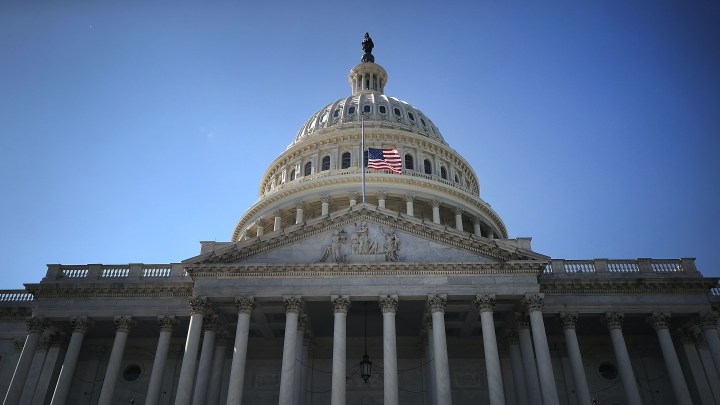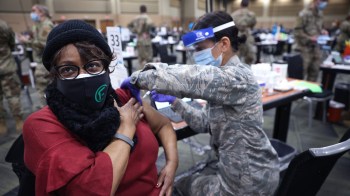
Fed and Treasury chart path back to “full employment”
Fed and Treasury chart path back to “full employment”

Federal Reserve Chair Jerome Powell, testifying on Capitol Hill on Tuesday, told senators the Fed will put off raising interest rates until it has achieved its goals for economic recovery, including a return to “full employment.”
From which we are quite a long way off. Just how far away is a matter of some interesting debate.
The official unemployment rate — counting everyone who doesn’t have a job and is actively looking — has come down from 14.8% in April — which was a post-Great Depression high — to 6.3% as of January. That is a very big improvement.
But it doesn’t count a lot of people who are unemployed in this pandemic, people who have lost work and aren’t looking right now, maybe because their kids are at home and schools are closed, or their whole sector is shut down, or they think they’ll get called back at some point.
Add all of them in, and Powell and Treasury Secretary Janet Yellen peg the real unemployment rate at close to 10%. Same as the worst month of the Great Recession.
So, what would it take to get back to full employment?
Think of “full employment” as an economic sweet spot. The unemployment rate is low enough that workers can find jobs easily and earn steadily higher wages. But it’s not so low that employers can’t find workers and have to bid wages up dramatically.
“You don’t have to worry that you’re just queuing with a whole lot of other unemployed workers for scarce jobs. It means you have some negotiating power,” said Jesse Rothstein, an economist at the University of California, Berkeley.
Economists say we hit full employment before the pandemic — when the level was 3.5%.
Now, unemployment’s officially at 6.3% — or upward of 10%, including all the folks who aren’t being counted or have stopped looking.
“No matter what measure you use, we’re in a very serious recession,” said Jason Furman, professor of economics at Harvard and former chair of the Council of Economic Advisers in the Obama administration.
According to Furman, millions of jobs are still missing in bars and restaurants, hotels and education. He thinks many of them can be restored with another round of stimulus and widespread vaccination.
“I think we can get a lot of the way back to full employment by the end of this year. I don’t know that we can get all the way back that quickly, just because for some people it’s going to take them time to find new jobs,” Furman said.
And it’ll be hardest for low-wage workers of color to get back to pre-pandemic employment levels, said economist Gary Hoover at Tulane University. “Even at its very best, Black unemployment was twice that of white unemployment. The response of Blacks to a shock like this takes longer and goes deeper.”
Hoover said getting the whole country back to full employment will take specific policies, like assistance to Black small-business owners and help paying for child care.
There’s a lot happening in the world. Through it all, Marketplace is here for you.
You rely on Marketplace to break down the world’s events and tell you how it affects you in a fact-based, approachable way. We rely on your financial support to keep making that possible.
Your donation today powers the independent journalism that you rely on. For just $5/month, you can help sustain Marketplace so we can keep reporting on the things that matter to you.


















